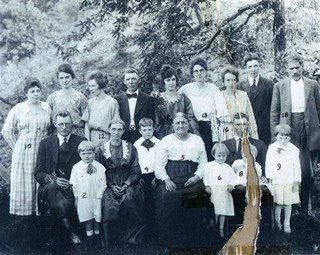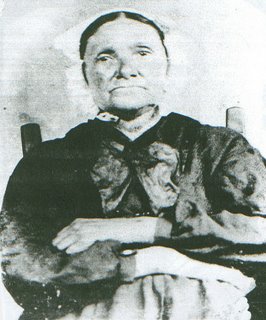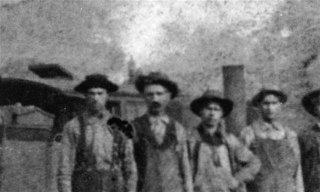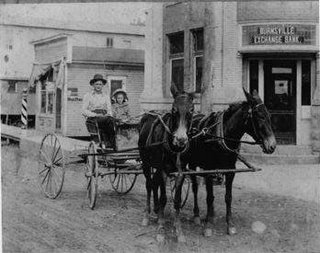This photo of a family gathering at the home of Ruddle & Mary (Murphy) Posey on Posey Run was taken about 1905.1 Family gatherings in a small community can be pretty confusing.
Ruddle & Mary (Murphy) Posey on Posey Run was taken about 1905.1 Family gatherings in a small community can be pretty confusing.
"Ruddle" Posey (Andrew Newton Posey2) b. 1851 d.1935 was the son of Alfred Posey and Christina Murphy Curtis. (Their fuzzy photo appears lower, on the left.) His wife was Mary E. Murphy, daughter of Thomas and Fatima Murphy. We don't know much about them.
 We can only identify four people in this photo. Ruddle and Mary (Murphy) Posey are seated in the middle of the front row with the open door in the background. Andrew J. and Ora (Riffle) Heater are the young couple standing in the front row, the second and third persons from the left. Explaining the relationships of just these four people will demonstrate how intricate the pattern of family relationships in this small community are.
We can only identify four people in this photo. Ruddle and Mary (Murphy) Posey are seated in the middle of the front row with the open door in the background. Andrew J. and Ora (Riffle) Heater are the young couple standing in the front row, the second and third persons from the left. Explaining the relationships of just these four people will demonstrate how intricate the pattern of family relationships in this small community are.
Use the Kinship Chart to the right if you'd like to play along. Click on it to enlarge it.
like to play along. Click on it to enlarge it.
CA = Common Ancestor
C = Child
S = Sibling
GC = Grand Child
GGC = Great Grad Child
N = Niece/Nephew
GN= Grand Niece/Nephew
GGN = Great Grand Niece/Nephew
#C = Number of Cousin (1C= First Cousin)
#R = Number of times Removed (1R = once removed)
Both Andrew and Ora are related to Ruddle, Andrew and Ora are related to each other and Ora is probably a cousin of Ruddell's wife Mary (Murphy). Ruddle, Andrew and Ora all descend from Catherine (Scott) Skinner Posey: Ora by Catherine's first husband, Alexander Skinner and Ruddle and Andrew her second husband, Edward Posey.
Here are the players' lineages:
3.Andrew “Ruddle” Posey, 2.Alfred Posey, 1.Ed & Catherine (Scott) Posey
5.Ora (Riffle) Heater, 4.MaryAnn (Skinner) Riffle, 3.Granville Skinner, 2.Alexander Skinner, 1.Alexander & Catherine (Scott) Skinner
4.Andrew Jackson Heater, 3.Sabina Posey, 2.William Patrick Posey, 1.Ed & Catherine (Scott) Posey
Sooo...
~ Ruddle and Andrew J. are first cousins once removed.
~ Ruddle and Ora are half-first cousins twice removed
~ Spouses Andrew and Ora are also cousins, half-second cousins once removed.
but wait, there's more.
~ Although we haven't been able to trace the Murphy family yet, we can be pretty sure Ruddle and his wife Mary Murphy are also cousins, as the middle name of Ruddle's mom Christina is Murphy.
And as an extra bonus, note that
~ David Parmer and I are third cousins, once removed. David is the great-grandson of Andrew Jackson and Ora (Riffle) Heater and I am the great-granddaughter of Ora's sister, Ennie Meshie (Riffle) with O.M. Stutler.
Thanks to cousin David Parmer for sharing Ruddell and Mary Posey's photo.
1. This house, by the way, burned in the 1930s while the family was at church.
2. According to Ron Skinner, Ruddell Posey's given name was Andrew Newton Posey, but he was called "Uncle Ruddle."
 Ruddle & Mary (Murphy) Posey on Posey Run was taken about 1905.1 Family gatherings in a small community can be pretty confusing.
Ruddle & Mary (Murphy) Posey on Posey Run was taken about 1905.1 Family gatherings in a small community can be pretty confusing."Ruddle" Posey (Andrew Newton Posey2) b. 1851 d.1935 was the son of Alfred Posey and Christina Murphy Curtis. (Their fuzzy photo appears lower, on the left.) His wife was Mary E. Murphy, daughter of Thomas and Fatima Murphy. We don't know much about them.
 We can only identify four people in this photo. Ruddle and Mary (Murphy) Posey are seated in the middle of the front row with the open door in the background. Andrew J. and Ora (Riffle) Heater are the young couple standing in the front row, the second and third persons from the left. Explaining the relationships of just these four people will demonstrate how intricate the pattern of family relationships in this small community are.
We can only identify four people in this photo. Ruddle and Mary (Murphy) Posey are seated in the middle of the front row with the open door in the background. Andrew J. and Ora (Riffle) Heater are the young couple standing in the front row, the second and third persons from the left. Explaining the relationships of just these four people will demonstrate how intricate the pattern of family relationships in this small community are.Use the Kinship Chart to the right if you'd
 like to play along. Click on it to enlarge it.
like to play along. Click on it to enlarge it.CA = Common Ancestor
C = Child
S = Sibling
GC = Grand Child
GGC = Great Grad Child
N = Niece/Nephew
GN= Grand Niece/Nephew
GGN = Great Grand Niece/Nephew
#C = Number of Cousin (1C= First Cousin)
#R = Number of times Removed (1R = once removed)
Both Andrew and Ora are related to Ruddle, Andrew and Ora are related to each other and Ora is probably a cousin of Ruddell's wife Mary (Murphy). Ruddle, Andrew and Ora all descend from Catherine (Scott) Skinner Posey: Ora by Catherine's first husband, Alexander Skinner and Ruddle and Andrew her second husband, Edward Posey.
Here are the players' lineages:
3.Andrew “Ruddle” Posey, 2.Alfred Posey, 1.Ed & Catherine (Scott) Posey
5.Ora (Riffle) Heater, 4.MaryAnn (Skinner) Riffle, 3.Granville Skinner, 2.Alexander Skinner, 1.Alexander & Catherine (Scott) Skinner
4.Andrew Jackson Heater, 3.Sabina Posey, 2.William Patrick Posey, 1.Ed & Catherine (Scott) Posey
Sooo...
~ Ruddle and Andrew J. are first cousins once removed.
~ Ruddle and Ora are half-first cousins twice removed
~ Spouses Andrew and Ora are also cousins, half-second cousins once removed.
but wait, there's more.
~ Although we haven't been able to trace the Murphy family yet, we can be pretty sure Ruddle and his wife Mary Murphy are also cousins, as the middle name of Ruddle's mom Christina is Murphy.
And as an extra bonus, note that
~ David Parmer and I are third cousins, once removed. David is the great-grandson of Andrew Jackson and Ora (Riffle) Heater and I am the great-granddaughter of Ora's sister, Ennie Meshie (Riffle) with O.M. Stutler.
Thanks to cousin David Parmer for sharing Ruddell and Mary Posey's photo.
1. This house, by the way, burned in the 1930s while the family was at church.
2. According to Ron Skinner, Ruddell Posey's given name was Andrew Newton Posey, but he was called "Uncle Ruddle."
Comments
comment 1 Donna Gloff

Karen Smith posted the photo to the right at Nettie Gregorey's Braxton County site. She tells us they are believed to be the children of Alfred and Christina (Murphy) Curtis Posey: Amanda (Posey) Heater, Mary Posey Knight, Andrew Newton “Ruddle" Posey, Edward A. Posey, John Fontaine Posey, George Jackson Posey, Alfred Jerome Posey




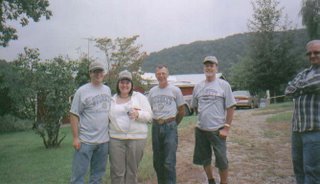


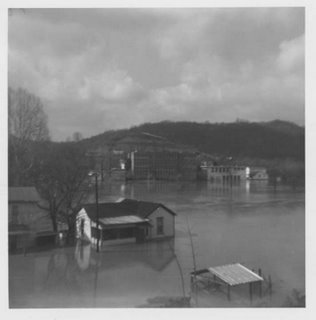


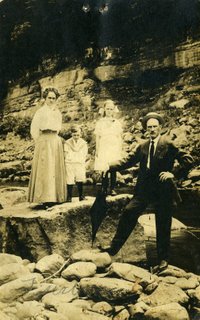
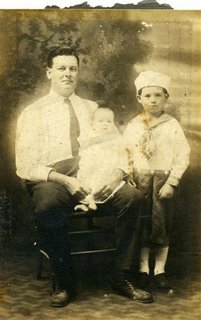 The Trimbles' two children, Stanton and Mary Elizabeth, (pictured to the right with their father) were born when he practiced in Orlando. Clora Henline, daughter of Beham and Samantha Henline, provided day care for the children.
The Trimbles' two children, Stanton and Mary Elizabeth, (pictured to the right with their father) were born when he practiced in Orlando. Clora Henline, daughter of Beham and Samantha Henline, provided day care for the children.
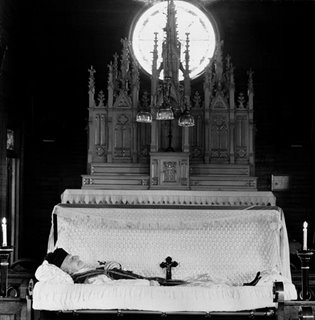

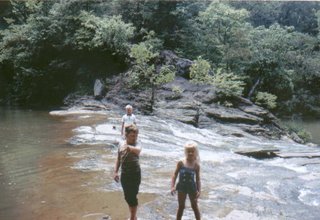
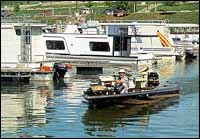


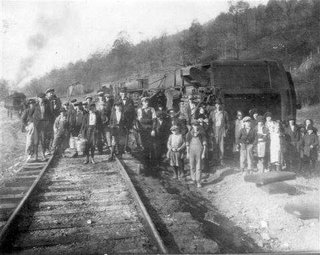
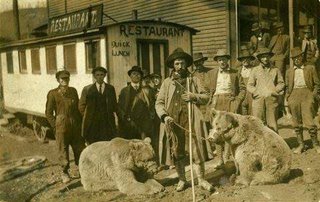
 house near the first in the 1940s. They spent the rest of their lives together in that house tucked away in the holler up Road Run.
house near the first in the 1940s. They spent the rest of their lives together in that house tucked away in the holler up Road Run.

